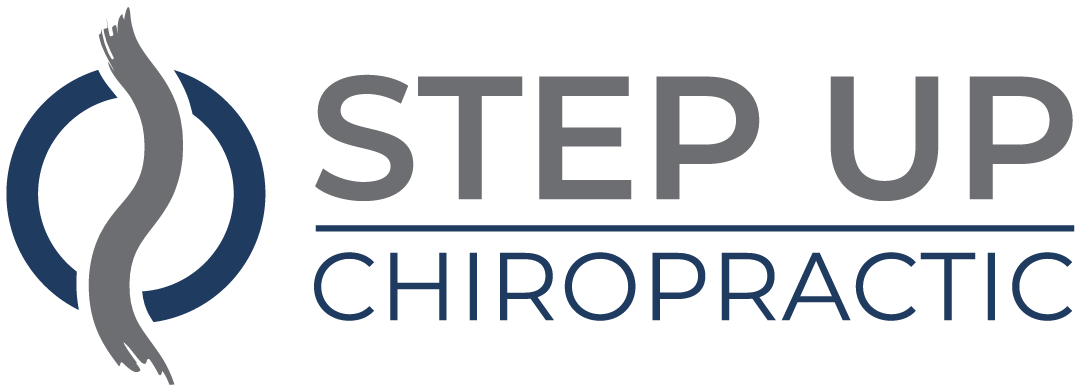As we look toward 2025, managing back pain is set to evolve considerably, and you'll want to be aware of the latest trends shaping this field. With telehealth innovations and personalized treatment plans gaining traction, the way you approach back pain could transform entirely. You might find that integrating wearable devices and virtual reality therapy into your routine offers unexpected relief. But what does this mean for traditional methods, and how can you best navigate these advancements? The answers could redefine your understanding of back pain management.
Telehealth Innovations
Telehealth innovations are revolutionizing how you manage back pain. With the rise of digital health platforms, you can now access specialized care without leaving your home. Virtual consultations allow you to connect with healthcare providers in real time, giving you immediate support and guidance tailored specifically to your needs.
You might be wondering how this works. Telehealth platforms often include video conferencing, messaging, and even remote monitoring tools. This means you can share your symptoms and concerns directly with a qualified professional, who can assess your condition and recommend treatment options. By eliminating the need for travel, you save time and reduce stress, making it easier to prioritize your health.
Another significant benefit is the accessibility of resources. Many telehealth services offer educational materials, exercise programs, and pain management strategies that you can access anytime. This empowers you to take control of your back pain management actively, allowing you to follow personalized routines that fit your lifestyle.
Additionally, telehealth can enhance your ongoing communication with your healthcare team. You can easily schedule follow-up appointments, discuss medication adjustments, or report any changes in your condition. This open line of communication fosters a more collaborative approach to your care, ensuring that your treatment plan evolves as needed.
As you explore these telehealth innovations, remember that they're designed to make managing back pain more convenient and effective. Embracing these technologies can lead to improved outcomes and a better quality of life.
Personalized Treatment Plans
With the convenience of telehealth, creating personalized treatment plans for back pain has never been easier. You can now access healthcare professionals from the comfort of your home, allowing for a tailored approach that meets your unique needs.
The process begins with a thorough assessment of your condition, including your medical history, lifestyle, and specific symptoms. This data helps your healthcare provider design a plan that's just right for you.
Here are four key components of a personalized treatment plan:
- Targeted Exercises: Your plan might include specific exercises designed to strengthen your back and improve flexibility, tailored to your pain level and physical capabilities.
- Pain Management Strategies: You'll likely explore various pain relief methods, from physical therapy to medication, ensuring you find what works best for you.
- Lifestyle Modifications: Your treatment may incorporate suggestions for ergonomic adjustments at work or home to prevent further strain on your back.
- Regular Follow-ups: By scheduling periodic check-ins, you can discuss your progress and make necessary adjustments to your plan, ensuring it evolves with your needs.
Embracing a personalized treatment plan empowers you to take control of your back pain management.
With the right support and resources, you can effectively alleviate pain and enhance your quality of life. Remember, your journey to recovery is unique, and your treatment should be too.
Wearable Pain Management Devices
As you navigate your journey to manage back pain, wearable pain management devices can offer a practical solution. These innovative gadgets are designed to provide relief through various methods, such as electrical stimulation, heat therapy, or biofeedback. By integrating seamlessly into your daily routine, they allow you to take control of your pain management without interrupting your lifestyle.
One popular option is transcutaneous electrical nerve stimulation (TENS) devices. These small, portable units attach to your skin and deliver mild electrical impulses that interfere with pain signals sent to your brain. Many users find that TENS helps reduce discomfort during daily activities or while exercising.
Another emerging technology involves smart fabrics embedded with sensors that monitor your posture and movements. These devices can alert you to improper positioning, helping you avoid further strain on your back. Some even provide real-time feedback and personalized recommendations to improve your habits.
Heat therapy devices, such as heated wraps and patches, can also be beneficial. They provide soothing warmth to tense muscles, promoting relaxation and circulation. Wearable versions often come with adjustable temperature settings, allowing you to tailor the experience to your comfort level.
Ultimately, wearable pain management devices empower you to manage your back pain more effectively. As you explore these options, consider your specific needs and preferences, and consult with a healthcare professional to find the best fit for your situation.
Embracing technology in your pain management strategy could lead to significant improvements in your quality of life.
Virtual Reality Therapy
Virtual reality therapy offers an innovative approach to pain relief by immersing you in engaging environments that distract from discomfort.
This technology not only helps reduce pain but also enhances your participation in the treatment process.
Immersive Pain Relief
Experience a new frontier in pain management with immersive virtual reality therapy. This innovative approach offers a unique way to distract your mind from pain, allowing you to engage in virtual environments that promote relaxation and healing.
Here are four key benefits of immersive pain relief:
- Distraction: By immersing yourself in a virtual world, you can shift your focus away from discomfort, helping to reduce your perception of pain.
- Engagement: Participating in interactive scenarios can keep your mind engaged, making it easier to cope with chronic pain.
- Customization: Many virtual reality programs allow you to tailor experiences to your preferences, ensuring the therapy feels personalized and effective.
- Accessibility: With advancements in technology, you can access virtual reality therapy from the comfort of your own home, making it a convenient option for managing back pain.
As you explore this cutting-edge treatment, you may find that immersive virtual reality therapy not only alleviates your pain but also enhances your overall well-being.
Embrace this exciting option to discover a new way to manage your back pain effectively.
Enhanced Patient Engagement
Immersive virtual reality therapy not only provides pain relief but also fosters enhanced patient engagement in the healing process. By stepping into a virtual world, you can interact with your environment in ways that traditional therapies can't offer. This interactive experience allows you to take an active role in your recovery, making it more engaging and personalized.
As you navigate through virtual scenarios designed to alleviate pain or improve mobility, you'll find yourself more invested in your treatment. You're not just passively receiving care; you're actively participating, which can lead to faster progress. This engagement boosts your motivation and encourages adherence to treatment plans, ultimately leading to better outcomes.
Moreover, virtual reality therapy can help reduce anxiety and fear associated with pain. By immersing yourself in calming environments or guided exercises, you can cultivate a sense of control over your pain management. This holistic approach not only addresses your physical symptoms but also supports your emotional well-being.
In 2025, embracing virtual reality therapy means empowering yourself in the journey toward managing back pain effectively. You'll discover that being engaged in your healing process can truly make a difference.
Mind-Body Connection Techniques
How can you harness the power of your mind to alleviate back pain? The connection between your mind and body is a powerful tool in managing discomfort. By incorporating mind-body connection techniques into your routine, you can enhance your overall well-being and greatly reduce your back pain.
Here are four effective strategies you can try:
- Mindfulness Meditation: This practice helps you stay present and focused, reducing anxiety and stress that can exacerbate pain. Spend just a few minutes each day sitting quietly, breathing deeply, and letting your thoughts pass without judgment.
- Visualization: Picture your back pain melting away. Visualizing a peaceful scene or imagining your body healing can create a sense of relaxation and promote physical relief.
- Yoga and Tai Chi: These gentle movements combine physical activity with deep breathing and mindfulness, improving flexibility and strength while calming your mind. Regular practice can lead to long-lasting relief from back pain.
- Biofeedback: This technique teaches you to control physiological functions, such as muscle tension and heart rate, which can help you manage your pain response. By becoming aware of your body's signals, you can learn to reduce stress and tension.
Incorporating these mind-body techniques into your daily life can empower you to take control of your back pain.
Regenerative Medicine Advances
Regenerative medicine is changing the way you can approach back pain relief.
With advancements like stem cell therapy, platelet-rich plasma treatments, and innovative tissue engineering, you have new options to explore.
These therapies aim to promote healing and restore function, potentially offering a more effective solution for your back pain.
Stem Cell Therapy
Exploring the potential of stem cell therapy offers new hope for those suffering from chronic back pain. This innovative approach focuses on harnessing the body's natural healing capabilities to regenerate damaged tissues and alleviate pain.
Here's what you should know about stem cell therapy:
- Source of Cells: Stem cells can be harvested from various sources, including bone marrow, fat tissue, or umbilical cord blood.
- Mechanism of Action: Once injected into the affected area, these cells can promote healing, reduce inflammation, and even regenerate nerve tissues.
- Personalized Treatment: Stem cell therapy allows for tailored treatments based on individual conditions, increasing the likelihood of successful outcomes.
- Minimally Invasive: Compared to traditional surgeries, stem cell procedures are typically less invasive, leading to quicker recovery times and less discomfort.
While research is ongoing, many patients are already experiencing significant improvements in their quality of life.
If you're dealing with chronic back pain, it might be worth discussing stem cell therapy with your healthcare provider. Embrace the future of regenerative medicine and explore all your options for relief.
Platelet-Rich Plasma
After looking into stem cell therapy, it's time to contemplate another promising treatment for back pain: Platelet-Rich Plasma (PRP).
PRP therapy utilizes your own blood to promote healing. By drawing a small amount of your blood, it's processed to concentrate the platelets, which are rich in growth factors. This concentrated solution is then injected into the areas of your back that are causing pain.
PRP has gained popularity for its potential to reduce inflammation and promote tissue regeneration, making it an appealing option for those suffering from chronic back pain. Many studies suggest that PRP can greatly improve pain and function, especially when traditional treatments haven't worked for you.
The procedure is minimally invasive, and the recovery time is often shorter than that of surgical interventions. Since you're using your own biological material, there's a lower risk of allergic reactions or complications.
However, it's important to consult with a healthcare professional who can assess your specific condition, as PRP mightn't be suitable for everyone.
In 2025, as research continues to evolve, PRP could become a staple in back pain management, offering hope for relief and enhanced quality of life.
Tissue Engineering Innovations
Tissue engineering is transforming the landscape of back pain management, offering innovative solutions that aim to repair and regenerate damaged tissues.
With advancements in regenerative medicine, you can look forward to new strategies that could greatly enhance your quality of life.
Here are four key innovations to watch for:
- Biomaterial Scaffolds: These structures support cell growth and tissue repair, mimicking natural tissue environments, and enhancing healing processes.
- Stem Cell Therapy: By harnessing the potential of your own stem cells, treatments can promote tissue regeneration and repair, addressing underlying causes of back pain.
- Gene Therapy: This cutting-edge approach involves altering genes to encourage tissue regeneration, potentially reversing damage caused by injury or degeneration.
- 3D Bioprinting: This technique allows for the precise creation of custom tissues that can be implanted, tailored to fit your unique anatomy and specific needs.
These innovations not only promise to alleviate your back pain but also aim for long-term solutions that target the root causes.
As these technologies mature, you'll have more effective options to take into account for managing your back pain in the near future.
Integrative Approaches to Care
Many people find that integrative approaches to care for back pain can enhance their overall well-being and improve their recovery. By combining conventional medical treatments with complementary therapies, you can address both the physical and emotional aspects of your pain. This holistic perspective often leads to better outcomes and a more satisfying recovery journey.
One popular integrative approach is the use of physical therapy alongside acupuncture. Physical therapists can help you strengthen the muscles supporting your spine while acupuncturists target pain relief through specific pressure points. This combination can reduce discomfort and promote mobility, making daily activities more manageable.
Mind-body practices, like yoga and meditation, are also effective in managing back pain. These techniques not only improve flexibility and strength but also teach you how to manage stress, which can exacerbate pain. By incorporating mindfulness into your routine, you can develop a greater awareness of your body and its signals, leading to more informed choices about your care.
Additionally, nutritional support plays a significant role in your recovery. A balanced diet rich in anti-inflammatory foods can help reduce pain and promote healing. Consulting with a nutritionist who understands back pain can provide personalized recommendations that support your journey.
Ultimately, combining these diverse approaches allows you to tailor your care to your specific needs, empowering you to take an active role in your recovery. Embracing integrative care can be a transformative step toward managing your back pain effectively and enhancing your quality of life.
Lifestyle and Preventative Strategies
Integrating various care approaches can greatly enhance your recovery from back pain, but adopting proactive lifestyle and preventative strategies is equally important.
By making a few key changes to your daily routine, you can notably reduce your risk of future back pain and improve your overall well-being. Here are four essential strategies to bear in mind:
- Maintain Good Posture: Whether you're sitting, standing, or lifting, proper posture is vital. Use ergonomic furniture and be mindful of your body alignment.
- Stay Active: Regular physical activity strengthens your muscles and improves flexibility. Aim for low-impact exercises like swimming, walking, or yoga, which can be particularly beneficial for your back.
- Watch Your Weight: Carrying excess weight puts additional strain on your back. A balanced diet and regular exercise can help you manage your weight effectively.
- Practice Stress Management: Chronic stress can lead to muscle tension and exacerbate pain. Engage in relaxation techniques like meditation, deep breathing, or tai chi to help manage stress levels.
Incorporating these strategies into your lifestyle isn't just about managing pain; it's about creating a sustainable routine that fosters long-term health.
Conclusion
As you navigate the evolving landscape of back pain management in 2025, embrace these innovative trends. Telehealth can connect you with experts, while personalized treatment plans cater to your specific needs. Wearable devices and virtual reality can enhance your pain management experience, and mind-body techniques foster holistic recovery. Don't overlook the potential of regenerative medicine. By integrating these approaches and prioritizing preventative strategies, you'll be better equipped to manage your back pain effectively and improve your overall quality of life.




